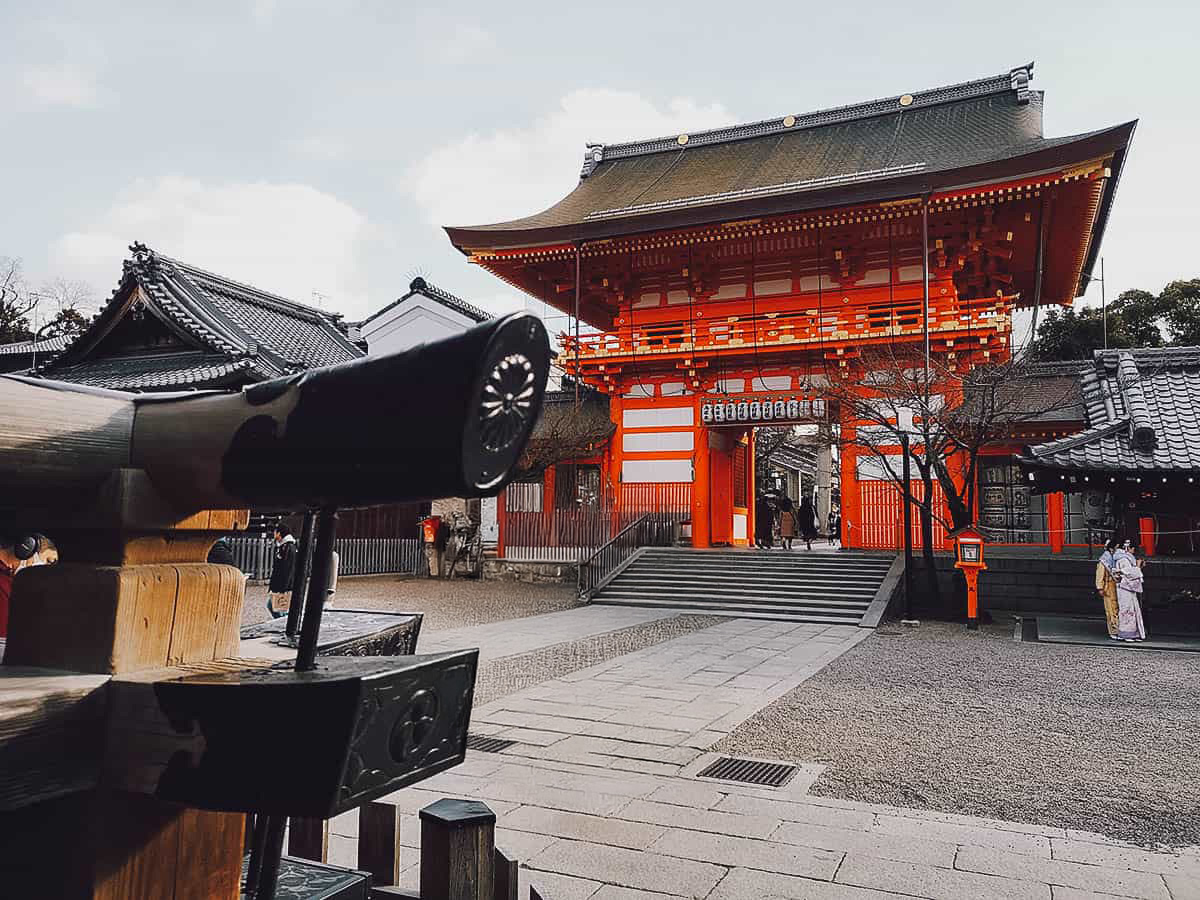SUMMARY HIGHLIGHTS
- Kyoto is at the center of the overtourism problem in Japan.
- There are many interesting attractions in Kyoto, but highlights include Kiyomizu-dera, Fushimi Inarin Shrine, Kinkaku-ji, and Arashiyama Bamboo Groves. Arriving early is key to avoiding the crowds.
- Kyoto is widely considered to be the birthplace of kaiseki.
Kyoto used to be my favorite city in Japan. It was a place I returned to again and again for its timeless beauty, tranquil atmosphere, and thousands of temples and shrines. Over the years, however, that quiet charm has become harder to find.
I’ve seen it change, become overwhelmed by crowds and the double-edged sword of popularity. Places like Arashiyama and Higashiyama have become packed from morning till night, their serenity disrupted by tour groups and selfie sticks. These days, moments of stillness are more elusive and no longer guaranteed.
Still, in spite of this, there’s a reason why so many people (myself included) continue to flock to Kyoto. Its magic hasn’t disappeared – it just takes a little more effort and patience to appreciate these days.
VISIT KYOTO QUICK LINKS
To help with your Kyoto trip planning, we’ve compiled links to top-rated hotels, tours, and other travel-related services here.
HOTELS
Recommended hotels in the city center, one of the most convenient places to stay for first-time visitors to Kyoto.
- Luxury: MOGANA
- Midrange: Hotel Grand Bach Kyoto Select
- Budget: Prince Smart Inn Kyoto Sanjo
EXPERIENCES
- Sightseeing Tour: Kyoto Historical Highlights Bike Tour with UNESCO Zen Temples
- Food Tour: Kyoto Night Foodie Tour
- Market Tour: Nishiki Market Brunch Walking Food Tour
- Tea Ceremony: Tea Ceremony With a Seasonal Light Meal
- Gastronomy: Kaiseki Course Meal at a Historic 250-year-old Restaurant
- Cultural Experience: Learn Kintsugi at a Lacquer Studio
- Cooking Class: Cooking Classes in Kyoto
OTHER SERVICES
GUIDE TABLE OF CONTENTS
KYOTO AT A GLANCE
When many people think of Japan, two cities often come foremost to mind – Tokyo and Kyoto. While Tokyo is the modern-day capital, Kyoto held that distinction for over a thousand years, from 794 to 1868, until power shifted from the Shogunate back to the Emperor[1].
Despite that change, Kyoto is still widely regarded as Japan’s cultural and historical heart. With an estimated two thousand temples and shrines[2], it’s long been considered one of the most beautiful cities in Japan.
I’ve explored many cities and prefectures throughout the country, but Kyoto continues to stand out. It remains, without question, the heart and soul of traditional Japan.
Sadly, Kyoto’s popularity has come at a cost. In recent years, overtourism has become a serious challenge for the city, especially in well-known areas like Gion and Arashiyama. The surge in foot traffic has led to increased litter, damage to cultural sites, and a noticeable strain on local infrastructure.
Kyoto is as beautiful as ever, but the sheer volume of tourists can sometimes make it difficult to appreciate.
BEST TIME TO VISIT KYOTO
The most popular times to visit Kyoto are during the spring (March-May) and fall (October-November) months when the weather is ideal and the landscape is at its most striking.
Both seasons are characterized by a dramatic shift in color – spring for its sakura pinks and whites, and autumn for its fiery reds, oranges, and yellows. Unlike its cold winters and hot summers, the weather is mild in spring and fall, so either season would be an ideal time to visit.
If you’d like to experience a festival, then you may want to brave the heat and humidity of July. Gion Matsuri, Kyoto’s biggest festival and one of the best festivals in Japan, features a spectacular procession of floats on July 17 and 24 every year.
WHERE TO STAY IN KYOTO
In my opinion, the downtown area west of the Kamo River is one of the most convenient areas to stay in Kyoto. It’s a busy commercial area with easy access to transportation.
I’ve created the color-coded map below to help you understand where all these recommended areas are. (Please note that marked areas are approximations only)
YELLOW – Downtown/Central
BLUE – Higashiyama
ORANGE – Around Kyoto Station
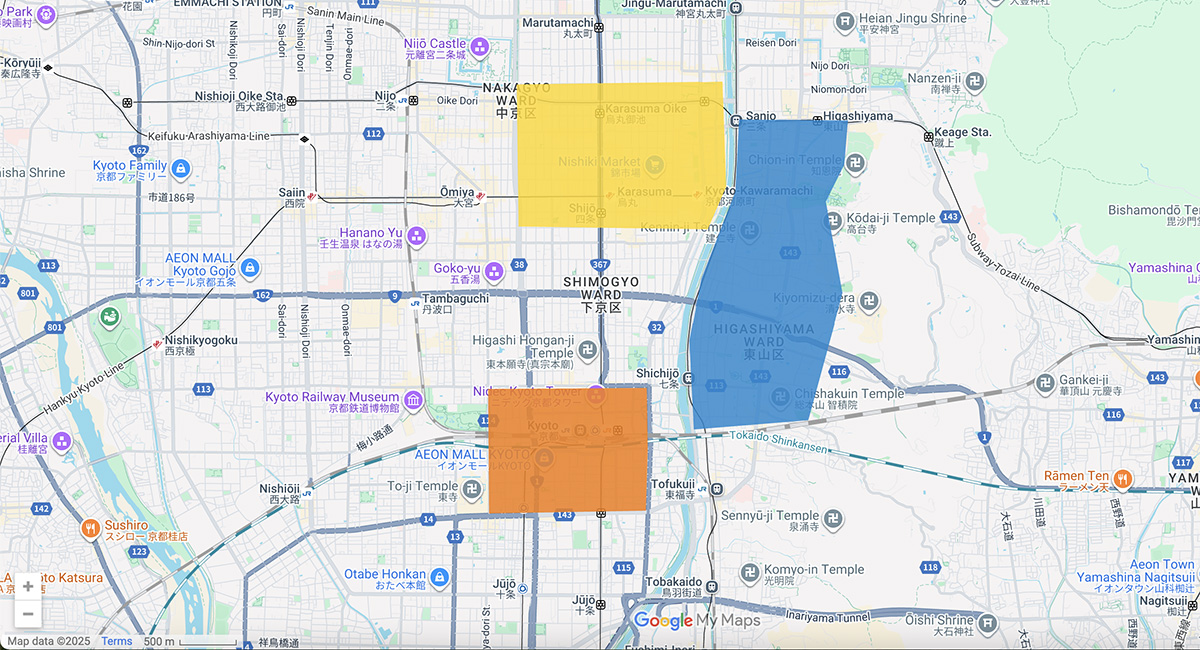
DOWNTOWN/CENTRAL
This central area is one of the busiest and most crowded parts of Kyoto, but it’s also one of the most convenient. It’s home to hundreds of restaurants and shops, along with transportation options that give you easy access to key places of interest in the city.
You can check Booking.com or Agoda for hotel listings in the downtown/central area. Here are some of the top-rated hotels in the neighborhood:
- Luxury: MOGANA
- Midrange: Hotel Grand Bach Kyoto Select
- Budget: Prince Smart Inn Kyoto Sanjo
HIGASHIYAMA
The city center may be more convenient, but cross the Kamo River to the east and you’ll find yourself in Higashiyama, arguably the best place to stay in Kyoto. Home to the Gion District and some of the city’s most iconic attractions like Kiyomizu-Dera and Yasaka Shrine, this is the place to be if you’d like to immerse yourself in traditional Kyoto.
You can check Booking.com or Agoda for hotel listings in Higashiyama. These are some of the top-rated hotels in the area:
- Luxury: Higashiyama Shikikaboku
- Midrange: HIYORI Stay Kyoto Kamogawa
- Budget: TSUKIMI HOTEL
AROUND KYOTO STATION
If you plan on using Kyoto as a base for day trips, then staying near Kyoto Station – the city’s main transportation hub – is a good idea. However, I find that getting around the city isn’t as easy from here. Buses are the more convenient option but they can get unbearably crowded.
You can check Booking.com and Agoda for hotels around Kyoto Station. Here are some of the most popular hotels in the area:
- Luxury: Dusit Thani Kyoto
- Midrange: Miyako City Kintetsu Kyoto Station
- Budget: Loisir Hotel Kyoto Toji
Regardless of where you stay in Kyoto, it’s worth mentioning that the local government will be raising lodging taxes in March 2026, in an effort to manage the effects of overtourism and fund necessary improvements. The change will most significantly impact tourists staying at high-end accommodations.
THINGS TO DO IN KYOTO
Go Temple Hopping
With an estimated two thousand temples and shrines located in and around Kyoto, finding one won’t be a problem. Knowing which ones to prioritize with the limited time you have is the bigger challenge.
If it’s your first time in Kyoto, then you’ll probably want to start with the most popular, a few of which can be found in Higashiyama. Kiyomizu-dera, one of Kyoto’s most iconic temples, is located here, as are Ginkaku-ji (Silver Pavilion), Eikan-do, Yasaka Shrine, and Nanzen-ji.
In the northern part of the city, Kinkaku-ji (Golden Pavilion, pictured below) is stunning and a crowd favorite. But it’s a bit out of the way and accessible only by bus, taxi, or private car. If you’re visiting this part of town, then Ryoan-ji is another temple you may want to check out. It’s home to the most famous rock garden in Japan[3].
In western Kyoto, Tenryu-ji is the most important temple in Arashiyama. Other notable temples in the area include Jojakko-ji, Nison-in, and Gio-ji. Kokedera (Moss Temple) is also interesting but it’s harder to get to and requires advanced reservations.
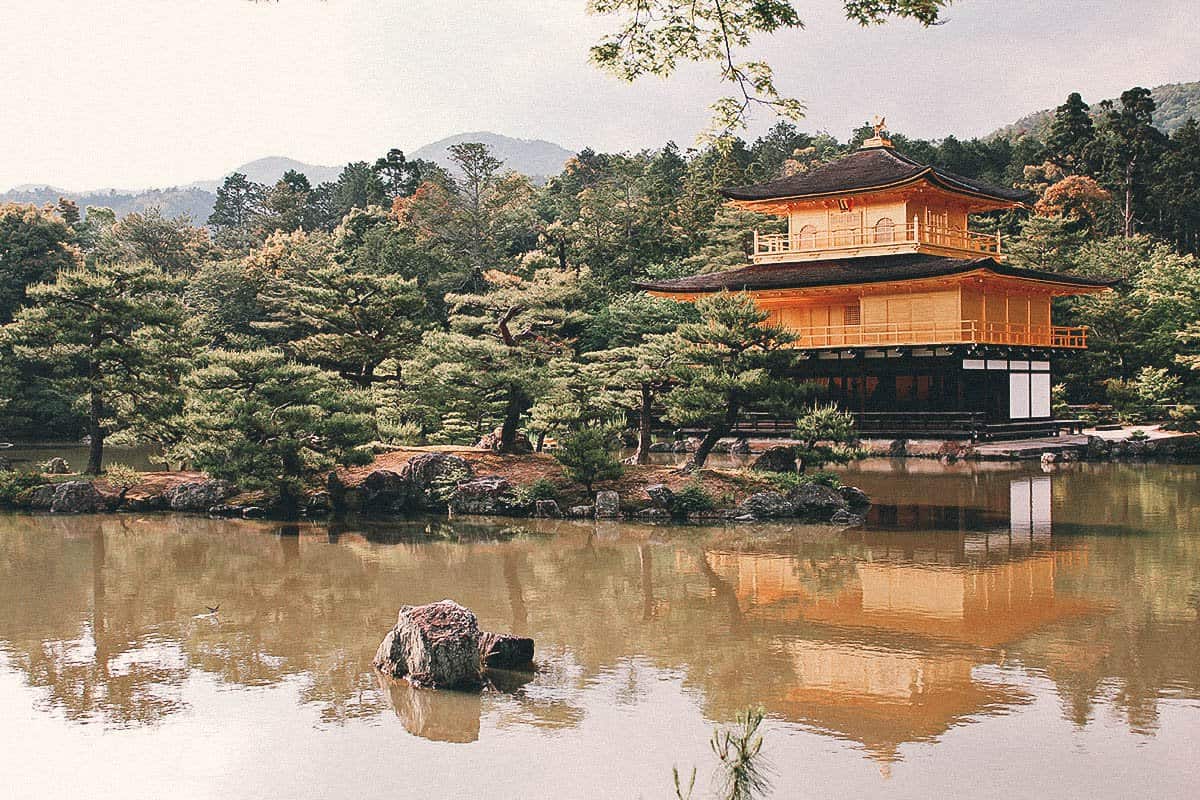
Visiting temples in Kyoto is rewarding, but it does take time and effort, no to mention a lot of patience. If you have limited time, then it’s a good idea to focus most of your attention on Higashiyama and Arashiyama districts. These two areas are walkable and have among the highest concentrations of temples and shrines in Kyoto City.
Of the temples mentioned, Kiyomizu-dera will likely be the most crowded. Kinkaku-ji, Ginkaku-ji, and Tenryu-ji are also very popular.
If you’d rather visit Kyoto’s top temples on a guided tour, then you may be interested in this 1-Day UNESCO World Heritage Site tour. It already includes transportation so you won’t have to worry about getting from one temple to the next.
Walk Through a Tunnel of Orange
Fushimi Inari Shrine is one of the city’s most iconic landmarks. It deserves its own entry on this list because walking through its orange torii gates is one of the most popular and picturesque things you can do in Kyoto.
Fushimi Inari Shrine is the most important shrine in Japan dedicated to Inari, the Shinto god of rice[4]. It’s famous for its thousands of vermilion torii gates straddling a network of hiking trails leading into the wooded forest of sacred Mt Inari.
Being one of the most popular landmarks in Kyoto, expect a lot of people when you visit. The good news is, most tourists stay at the lower sections just to take pictures of the torii gates. You can escape the crowds by hiking up to the summit of Mt Inari. It takes around 2-3 hours to do the full hike, which you can do on your own or on a guided hiking tour.
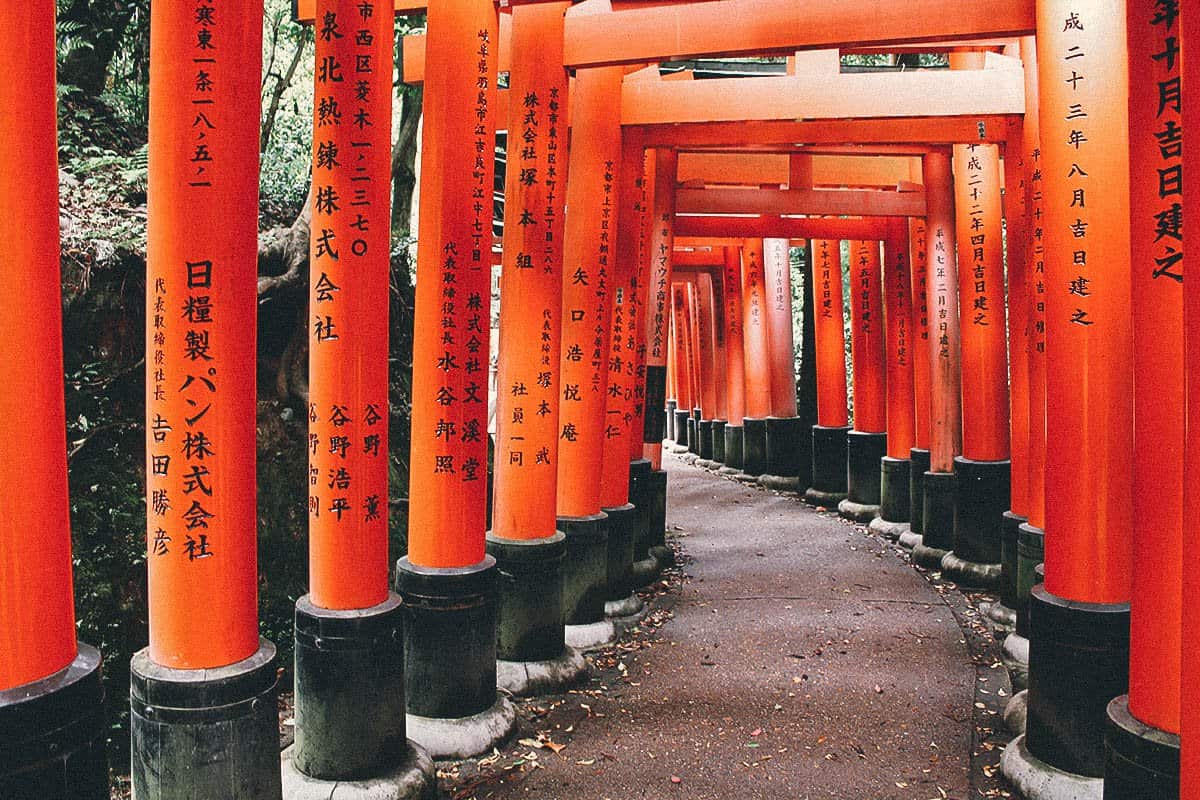
Visit Arashiyama’s Bamboo Groves
Like the torii gates at Fushimi Inari Shrine, the bamboo forest in Arashiyama is one of the most popular and photographed areas of Kyoto. It’s famous for these towering stalks of bamboo which can measure up to 20 meters in height (65.6 ft)[5].
Arashiyama is a pleasant district that’s home to many interesting temples, restaurants, and shops. There’s enough here to merit a full day of exploration, if you can stomach the crowds.
It’s easy enough to explore Arashiyama on your own, but if you’d like to go with a guide, then you may be interested in this half-day walking tour. This private boating trip on the Oi River may be of interest to some people as well.
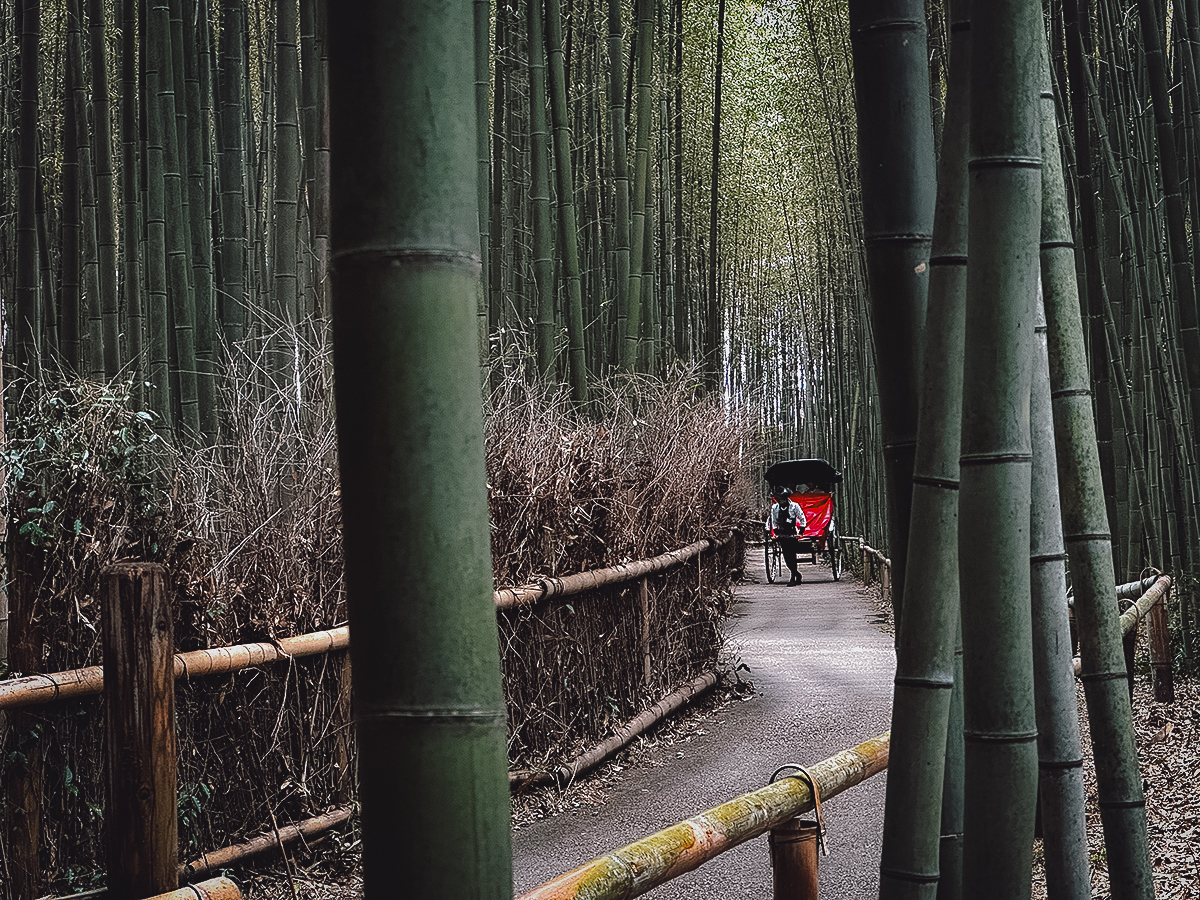
Explore a Geisha District
Exploring a geisha district is one of the coolest things you can do in Kyoto. Known locally as hanamachi, these traditional neighborhoods are where geisha live, train, and entertain guests. Characterized by wooden machiya shophouses, visiting a geisha district makes you feel like you’ve stepped back into the Edo period of Japan.
There are five geisha districts in Kyoto but the legendary Gion district is the most famous with the highest number of active geiko (geisha in the Kyoto dialect) and maiko (geisha apprentice). Gion is actually comprised of two geisha districts – Gion Kobu and Gion Higahsi.
The other three hanamachi are Pontocho Alley (pictured below), Miyagawacho, and Kamishichiken. Kamishichiken is the oldest and most traditional of Kyoto’s five geisha districts.
I’ve been lucky to spot a few geiko in Gion (or were they maiko?), but if you’d like to interact and be entertained by one, then you may be interested in these private geiko or maiko experiences in Gion (option 1 | option 2) and Kamishichiken.
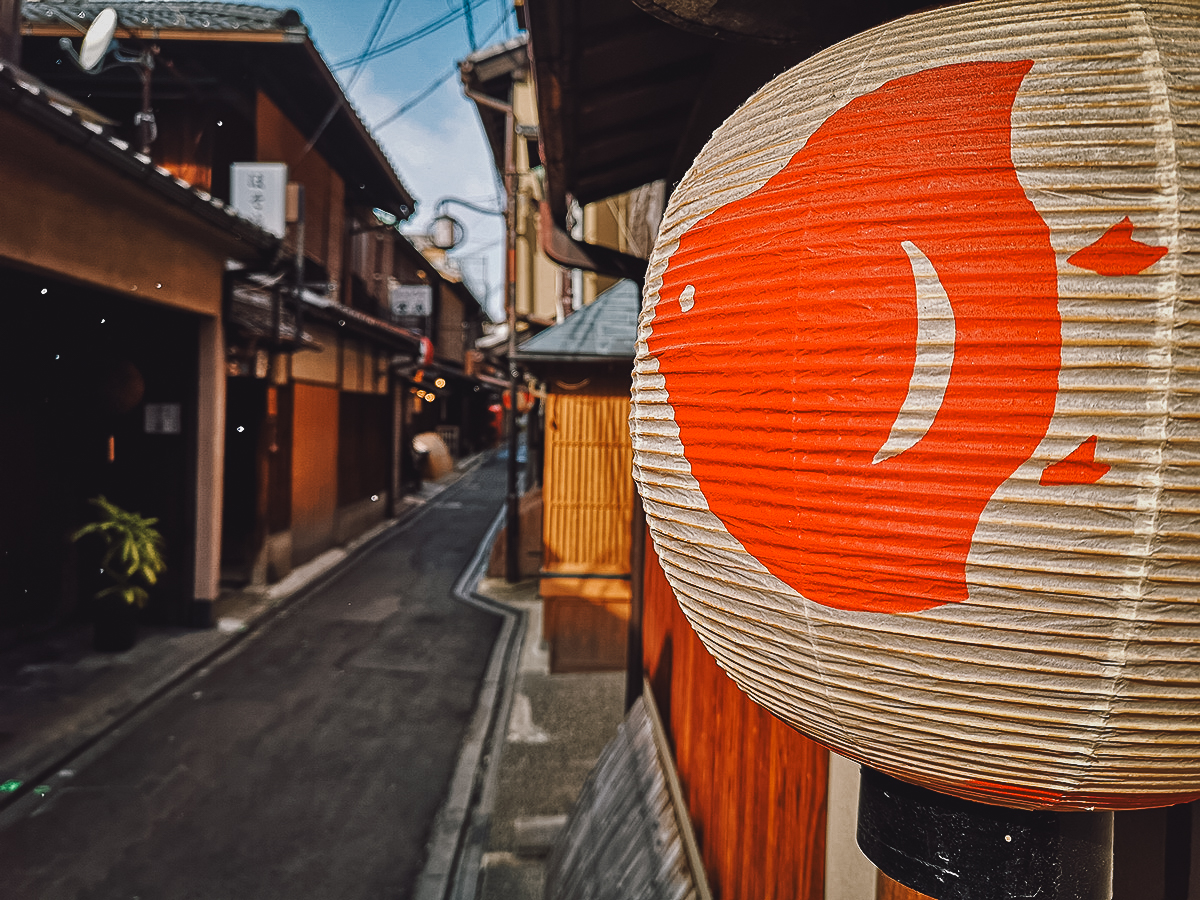
Don’t Fall Down at Ninen-zaka and Sannen-zaka
Ninen-zaka and Sannen-zaka literally translate to “two-year hill” and “three-year hill” respectively. According to local superstition, stumbling and falling down while walking on these streets will cause you to die within two or three years[6]. It sounds scary, but the only frightening thing about these gently sloping streets is the overcrowding.
Characterized by traditional wooden houses – many of which have been converted into shops, cafes, restaurants, and teahouses – Ninen-zaka and Sannen-zaka are two of the most atmospheric streets in Kyoto. They lead to or away from Kiyomizu-dera and have become one of the most popular places to visit in the city.
The crowds at Kiyomizu-dera and these two narrow streets can become unbearable, so try visiting as early in the morning as you can.
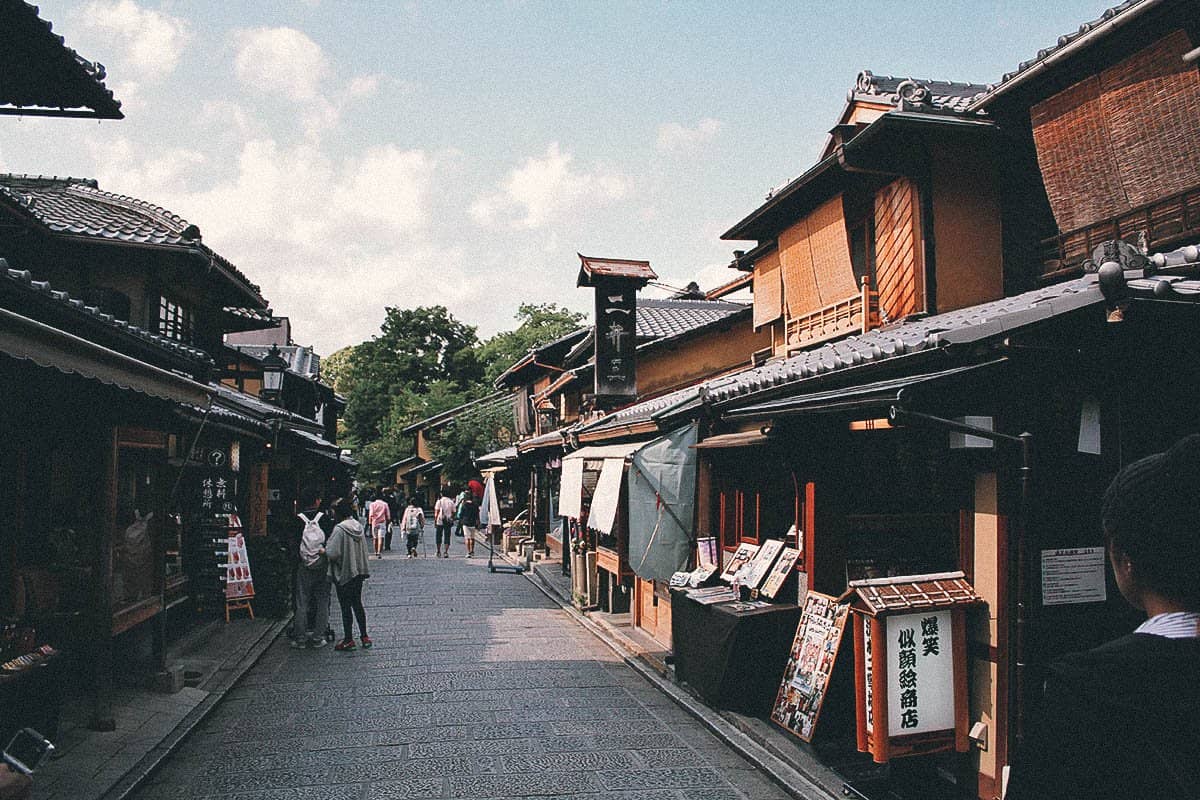
Tread Lightly in Nijo Castle
Nijo-jo is missing its tenshu (castle keep), so in my opinion, it lacks the visual presence of fully intact castles. However, it’s still one of the most interesting castles I’ve been to in Japan.
Nijo Castle is a UNESCO World Heritage Site and the former castle residence of Tokugawa Ieyasu, Japan’s first Edo Period shogun[7]. It’s famous for its landscaped gardens, cherry trees, and an ingenious alarm system known as the nightingale floors.
With every step, flooring nails beneath the floorboards rub against a jacket or clamp to produce low creaks reminiscent of chirping sounds, hence the name “nightingale floors”. It was a warning system designed to alert the shogun and his bodyguards of any impending ninja attacks. How cool is that?
Nijo-jo is located in central Kyoto so it isn’t hard to get to. You can easily visit on your own or go on a guided tour.
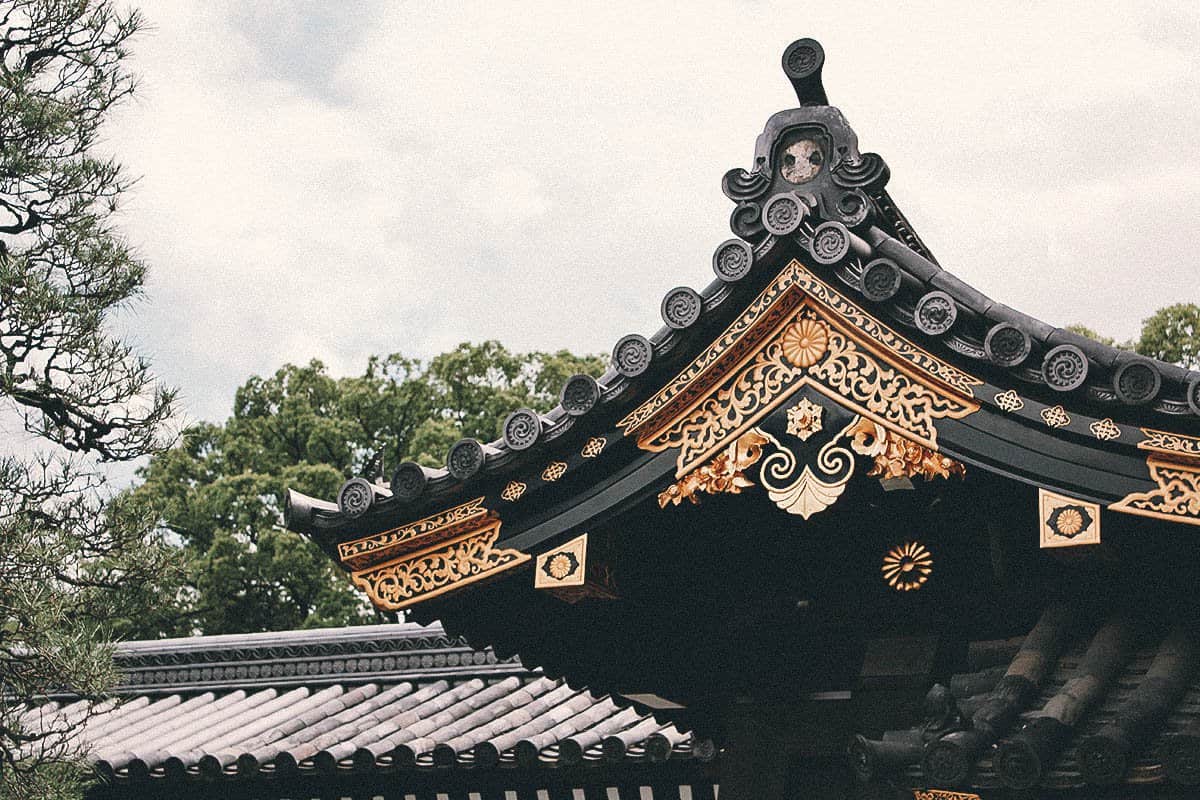
Eat Your Way Through Nishiki Market
One of my favorite things to do in Japan is to visit local markets. In central Kyoto, you can sample local delicacies at Nishiki Market, a long and narrow shopping street with over a hundred food stalls and restaurants selling cooked Japanese food, produce, pickled vegetables, and kitchenware.
Like many of Kyoto’s most popular attractions, Nishiki Market gets crowded during the day so it’s best to go early in the morning. You can visit on your own but if you want a local’s guidance, then you may be interested in this brunch walking tour.
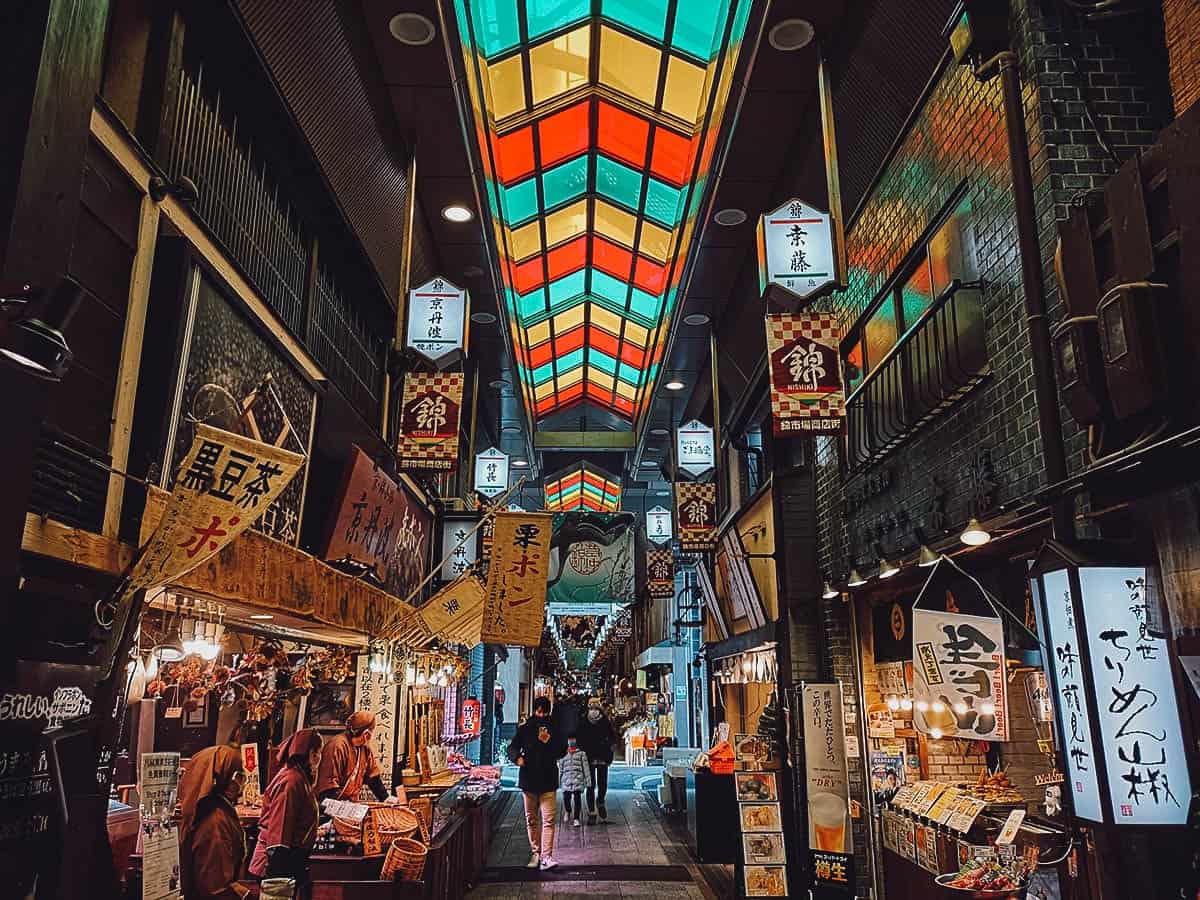
Experience a Multi-Course Kaiseki Meal
Many tourists visit Kyoto for its temples. But did you know that Kyoto is also one of the most refined food cities in Japan? It’s home to the most Michelin-starred restaurants per capita in the world, many of which specialize in kaiseki.
Kyoto is considered by many to be the birthplace of kaiseki ryori[8]. Kaiseki refers to a multi-course meal consisting of small, meticulously plated dishes made with the finest seasonal ingredients. Renowned for its artful presentation, it’s widely regarded as the pinnacle of Japanese haute cuisine.
It isn’t the most recent but this Reddit thread offers a list of Michelin-starred kaiseki restaurants in Kyoto. If you have yen to splurge on a truly special meal – one with deep spiritual ties to Kyoto – then look no further than kaiseki ryori.
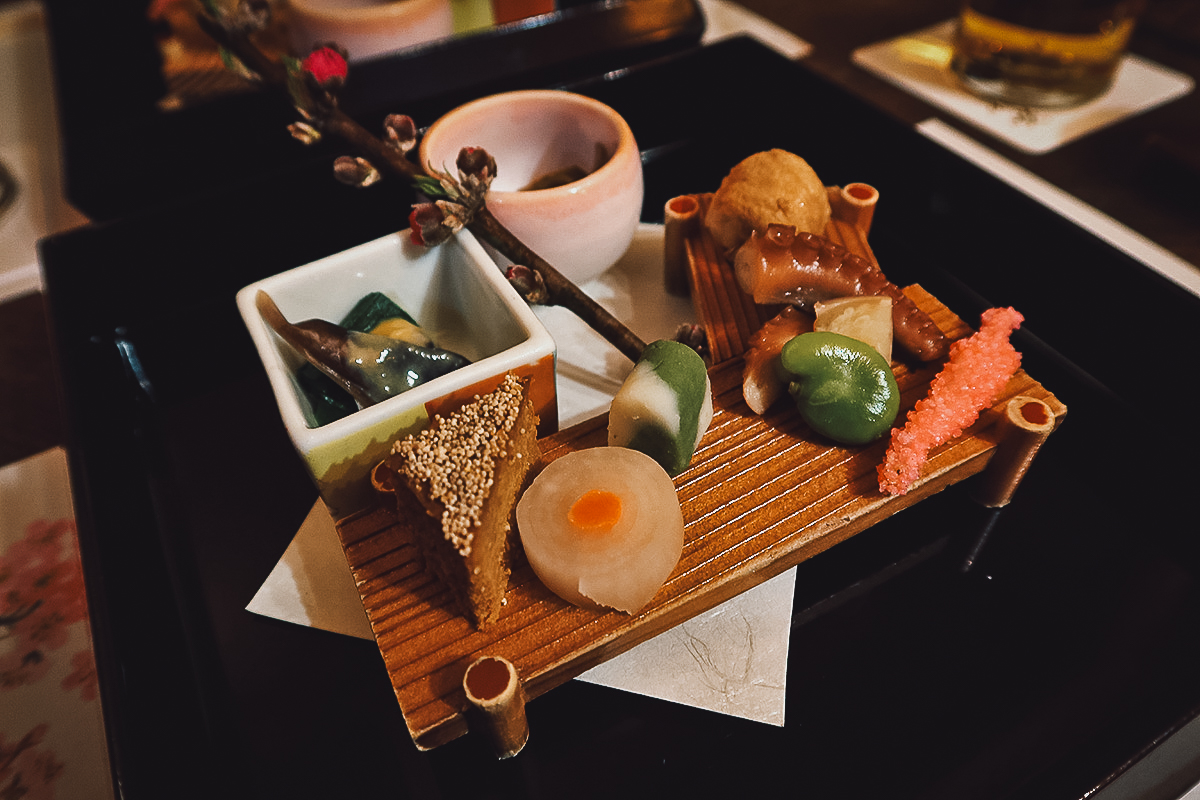
Go Sake Tasting in Fushimi
Do you like to drink? If you do, then you can pair your trip to Fushimi Inari Shrine with a visit to a sake brewery.
Fushimi Sake District is a traditional sake brewing district along the Horikawa River in Kyoto. With nearly forty breweries, it ranks as Japan’s second-largest sake-producing area, behind only Nada in Kobe[9].
I went on a sake tasting tour in Fushimi a few years ago, and it completely changed how I view sake. I’ve always enjoyed drinking sake, but seeing how it’s made and learning to pair it with the right food gave me a much deeper appreciation and respect for it.
There are a few breweries and museums you can visit in Fushimi, but if you’d like to deepen your understanding of sake, then I highly recommend going on a sake tasting tour.
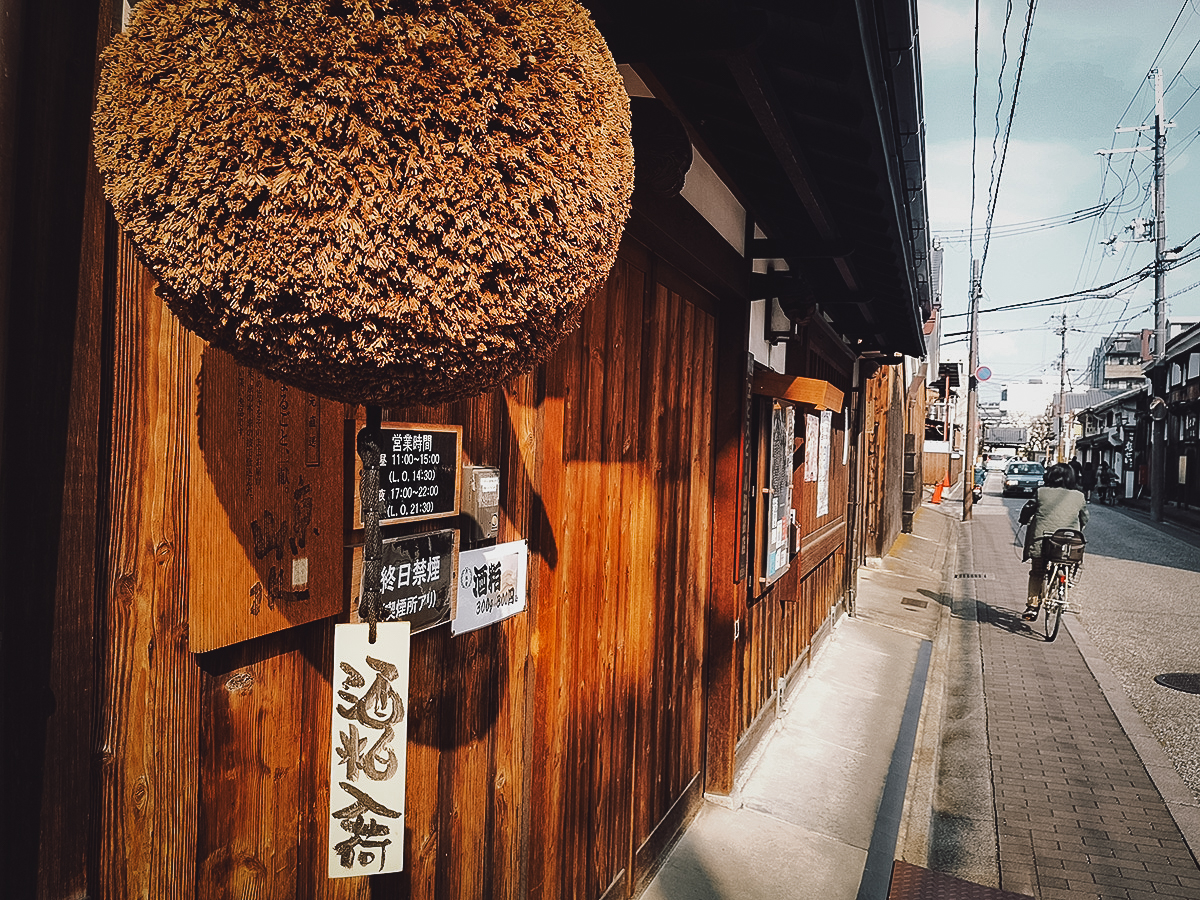
Enjoy a Cultural Experience
Going on a food or sightseeing tour is fun, but doing something culturally unique – like fixing broken pottery with the art of kintsugi (pictured below) or enjoying a tea ceremony with a private Noh performance – adds a deeper and more memorable layer to your Japan experience.
If you’d like to enjoy a private, culturally immersive experience in Kyoto – one that’s a little different from the typical group tour – then you need to check out Wabunka.
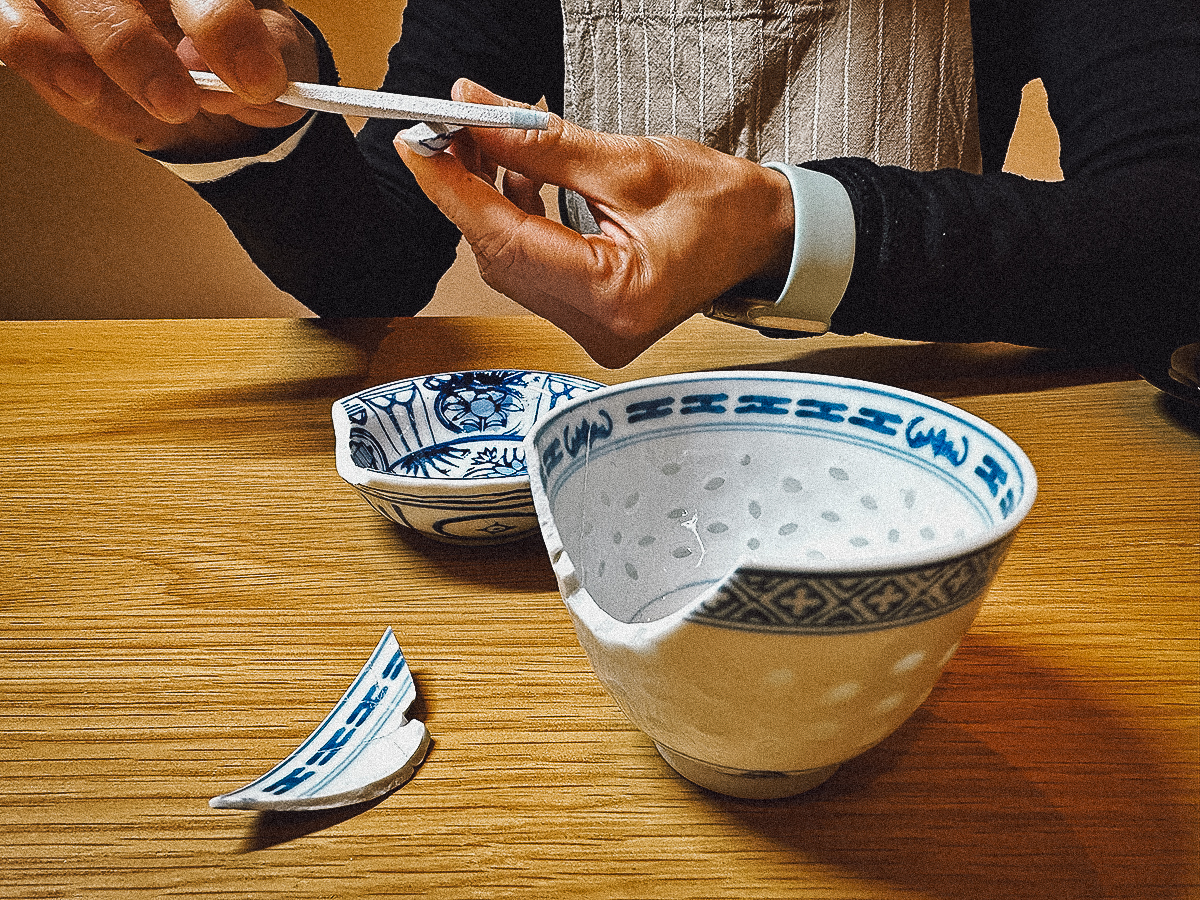
Take a Cooking Class
If you enjoy cooking and have a love for Japanese cuisine, then why not take a cooking class? I’ve taken several around the world – including one in Tokyo – and every class has deepened my appreciation and understanding of the local cuisine.
Whether you want to make sushi, craft traditional wagashi, or assemble cute bento boxes, platforms like airKitchen and byFood offer a wide range of fun cooking classes to choose from in Kyoto.
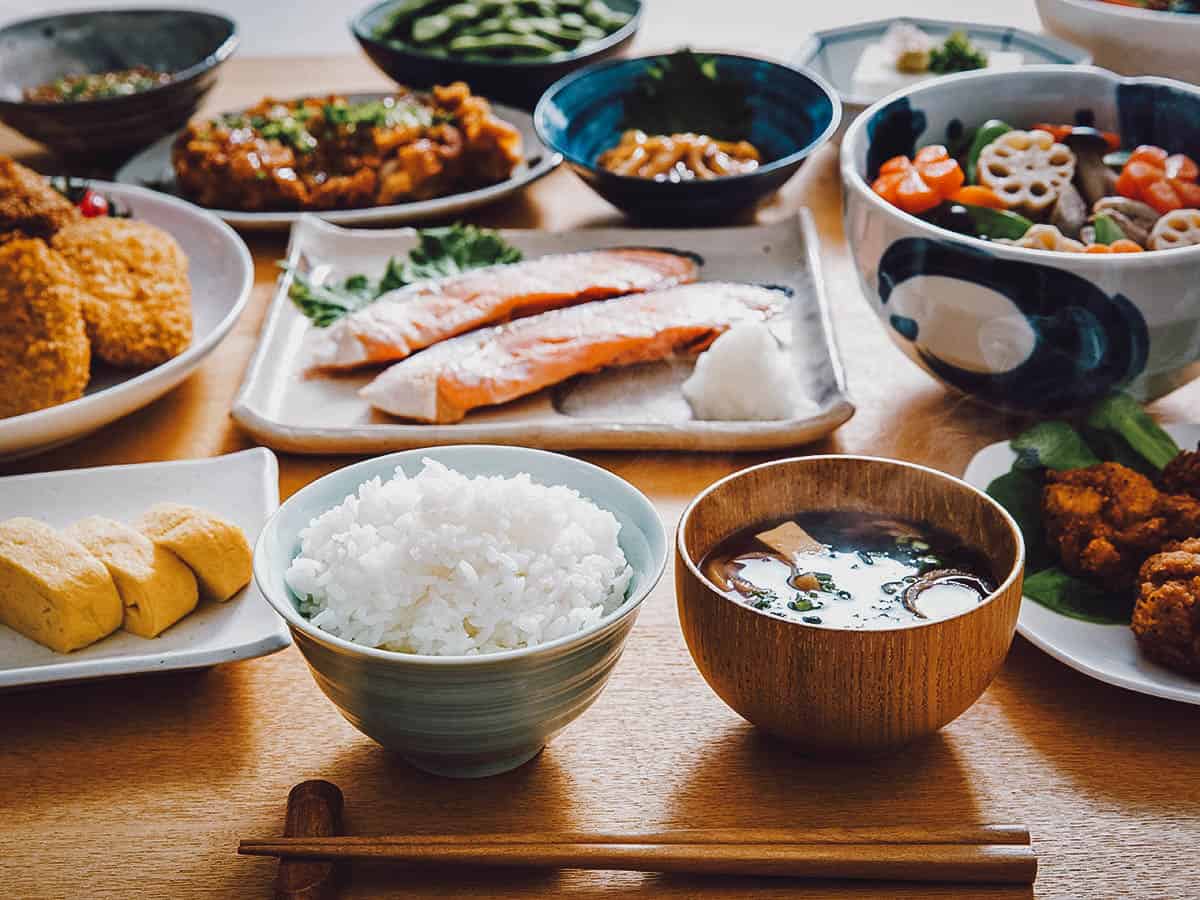
Photo by kazoka via Shutterstock
DAY TRIPS FROM KYOTO
Kyoto’s temples will keep you busy, but if you’re staying long enough, then you may have time for a day trip. These are some of the most popular but be sure to refer to my article on cool day trips from Kyoto for more recommendations.
Uji
If you’re a fan of matcha, then a visit to Uji is a must. This small town, about half an hour south of Kyoto, is known for producing some of Japan’s finest green tea – a reputation it’s held since the 13th century.
Wander through Uji and you’ll find matcha-infused goodies everywhere – from soba noodles and traditional sweets to the creamiest soft serve ice cream. The town also offers immersive experiences like authentic tea ceremonies, hojicha roasting, and tea milling.
Beyond its tea culture, Uji is home to several important temples and shrines – most notably Byodo-in (pictured below). If you’re into video games, then you’ve probably heard that the new Nintendo Museum recently opened in Uji in October 2024.
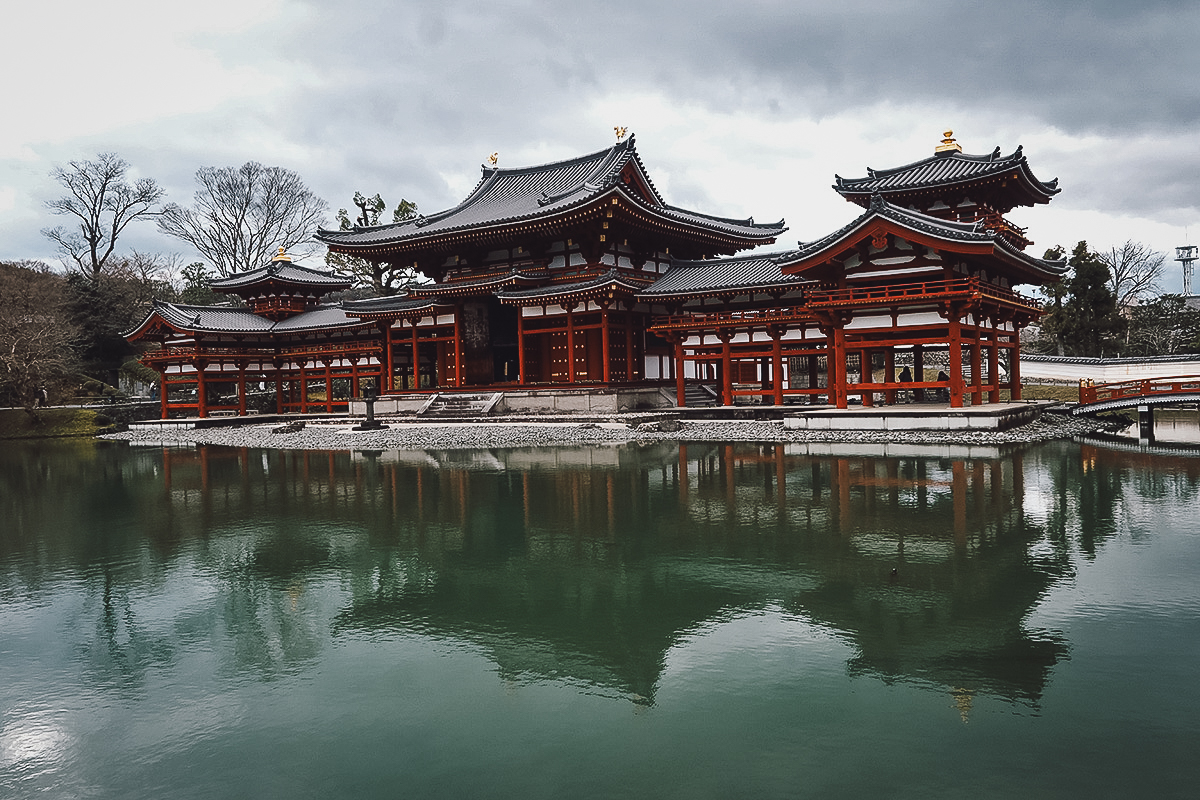
Kibune
Kibune is a small town nestled in the northern mountains just outside Kyoto. The town is centered around Kifune Shrine, a Shinto shrine famous for its stone stairway lined with red lanterns (pictured below).
Kifune Shrine is dedicated to the deity of water and rain and has long been regarded as a guardian of seafarers. The town is home to a few ryokans and restaurants, along with a scenic trail that connects hikers to Kurama-dera Temple and Kurama Onsen, one of Kyoto’s most beloved hot springs.
While Kibune is a popular retreat in the summer, it’s most beautiful in autumn, when the surrounding forest transforms into a blaze of fiery colors. It’s an easy day trip destination from Kyoto, but you can also visit on a guided hiking tour.
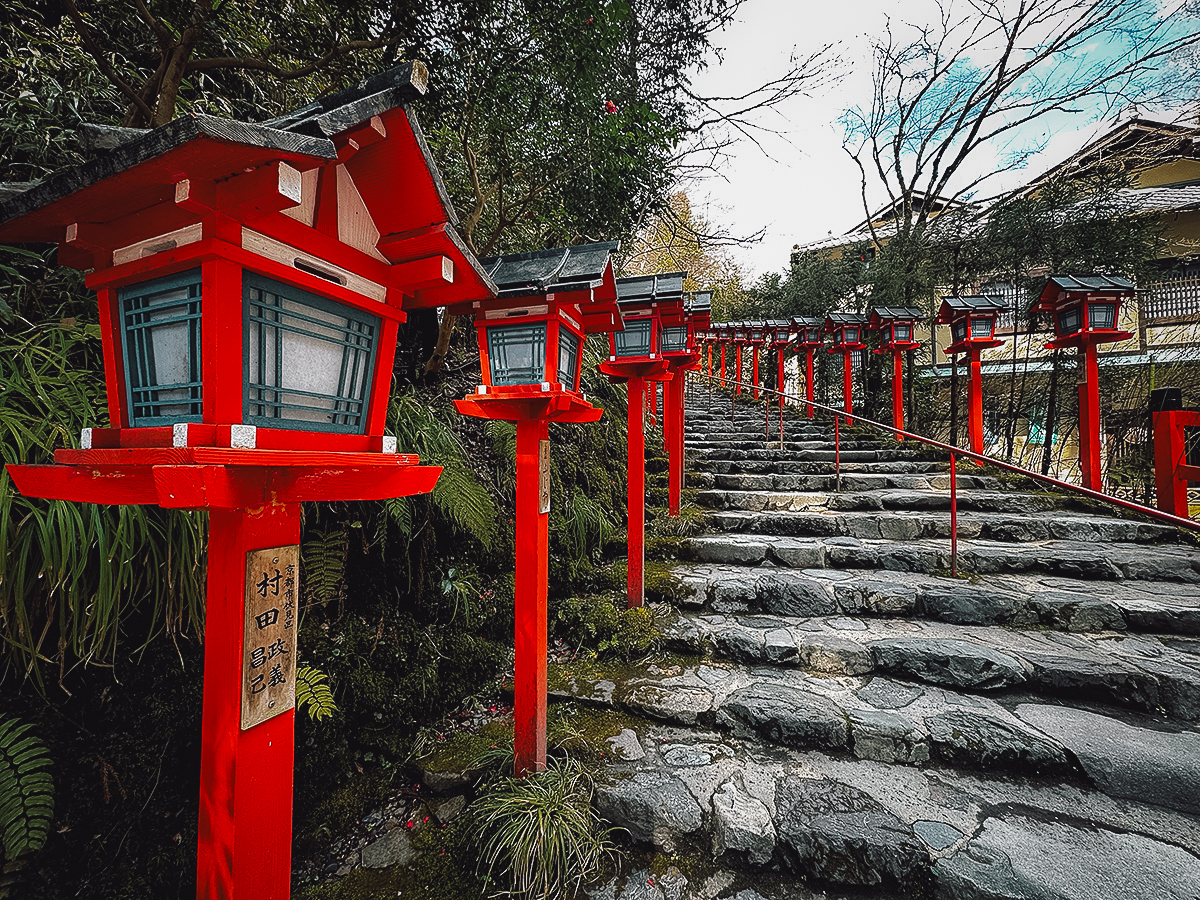
Osaka
Like Kyoto, Osaka needs little introduction. They’re two of the most visited destinations in Japan, but for different reasons. Kyoto is known for its historical and cultural attractions while Osaka draws you in with its urban energy and comforting regional food.
Situated around half an hour apart by train, I like to think of Osaka and Kyoto as the yin and yang of the Kansai region. You can’t go to one without spending time in the other, hence rail passes like the Kyoto-Osaka Sightseeing Pass.
Unless you’re planning to spend a day at Universal Studios Japan, one full day is usually enough time to visit Osaka’s top attractions. This gives you time to visit Osaka Castle and the vibrant Namba and Umeda districts. Food is a big part of the Osaka experience so I highly recommend going on a food tour.
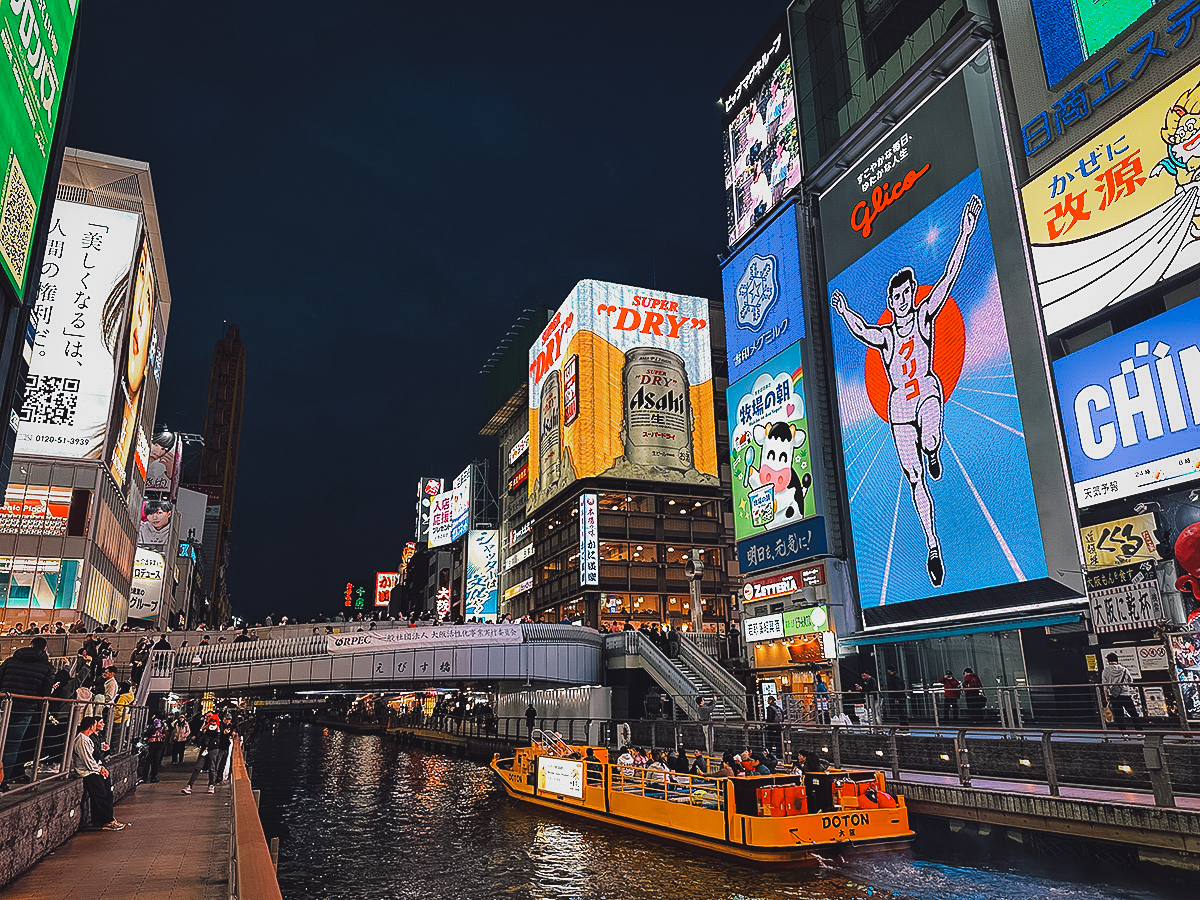
Nara
If you aren’t templed out yet, then you may want to spend a day in Nara. Like Kyoto, Nara is known for its many temples and shrines, most notably the Historic Monuments of Ancient Nara.
Todai-ji, Kofuku-ji, and Kasuga Taisha are impressive, but for many tourists who visit Nara, what sets it apart are the hundreds of sika deer that freely roam Nara Park. These deer go crazy over shika senbei crackers, which you can buy and feed to them by hand.
Smaller and more compact than Kyoto, Nara is easy to explore on your own. But if you’d prefer to visit with a local guide, then you may be interested in this half-day walking tour.
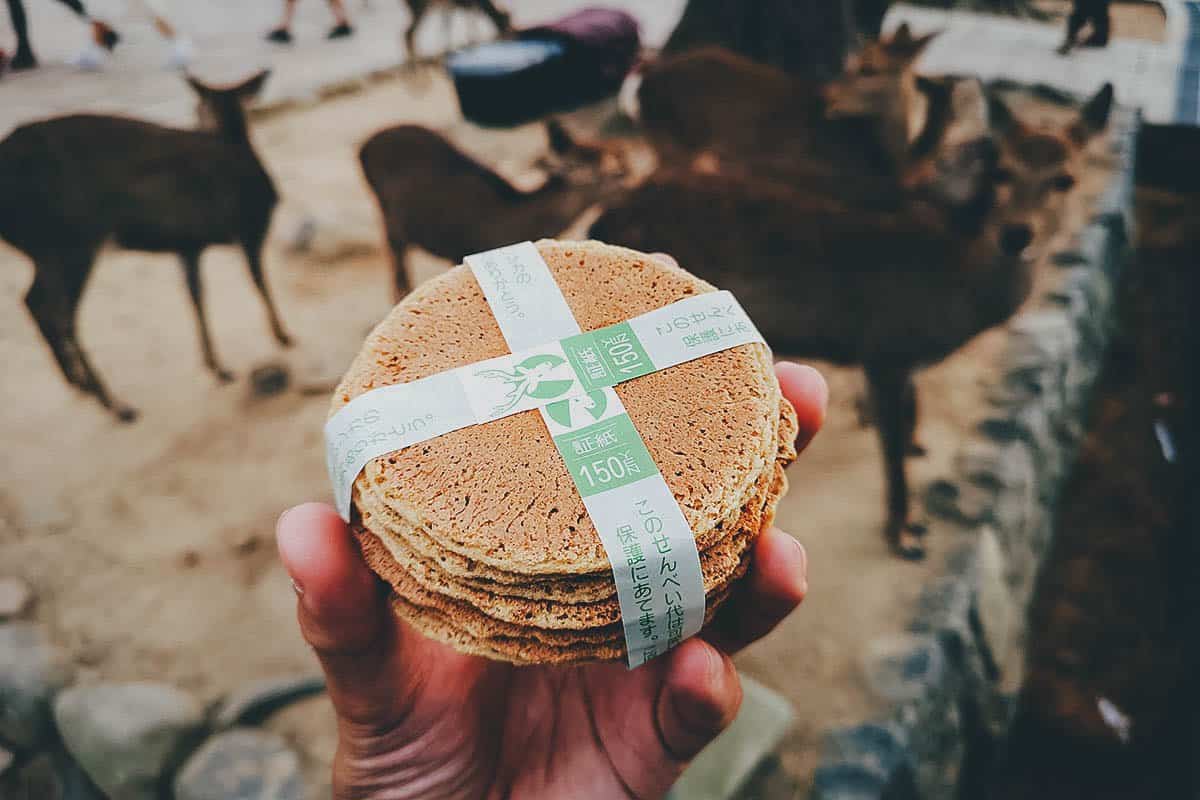
VISIT KYOTO FAQs
How many days do I need in Kyoto?
This is a tough question. There is so much to see and do in Kyoto that even a week can feel short.
If it’s your first time in Kyoto, then I’d say three full days is just enough time to experience its top attractions. One day for Higashiyama, another for Arashiyama and Kinkaku-ji, and the third for Fushimi Inari Shrine, Nijo-jo, and anything else that may have piqued your interest.
But stay longer if you can. Kyoto isn’t a place that should be rushed, in spite of its often unbearable crowds.
Is it easy to get around in Kyoto?
Getting around Kyoto is easy, though perhaps not as easy as Osaka. You’ll need to rely on buses more in Kyoto, which can get frustrating because of how packed they get. I’ve personally come to dread riding the bus in Kyoto, especially to popular areas like Higashiyama and Kinkaku-ji.
To make commuting easier, I highly recommend getting an IC card. It’ll save you from the hassle of having to buy single journey tickets each time you ride the bus or subway.
If you plan on packing as much sightseeing as you can in one day, then the Subway & Bus 1-Day Pass may be a worthwhile investment.
How do I avoid the crowds at popular tourist attractions?
Arrive early. That’s pretty much all you can do. If a temple opens at 6AM, then be there at 5:45AM. Going early is the only way you can beat the crowds.
I want to visit other cities in the Kansai region. What transportation pass can I use?
If you’d like to explore more of the Kansai region, then getting a JR West Kansai Area Pass or a Kansai Railway Pass can be a great investment, as long as you use it enough to justify the cost. Both offer unlimited rides within their validity periods, but they differ in coverage and flexibility.
The JR West Kansai Area Pass is valid only on JR trains and must be used on consecutive days (available in 1- to 4-day options). In contrast, the Kansai Railway Pass (formerly known as the Kansai Thru Pass) covers non-JR trains and can be used on non-consecutive days (2- or 3-day options).
Though the Kansai Railway Pass is a bit pricier, it offers more flexibility and includes access to the subways of Osaka, Kyoto, and Kobe. However, it isn’t valid on JR trains, which can be an inconvenience depending on your itinerary.
If your goal is to explore Nara and Mie prefectures, then the Kintetsu Rail Pass is an excellent option.
THE FINAL SAY
Kyoto may not be as peaceful and relaxing as it once was, but its beauty and historical significance remain unchanged. Yes, the crowds can be overwhelming, especially in peak seasons, but that’s merely a testament to the city’s enduring allure.
As I often say, touristy places are touristy for a reason.
From its centuries-old temples to its rich culinary traditions and windows into geisha culture, Kyoto offers an experience that few places can match. With a bit of planning and patience, you can still find moments of magic that make Kyoto the special place it’s always been.
Disclosure
This Kyoto travel guide contains affiliate links, meaning we’ll earn a small commission if you make a booking at no extra cost to you. We only recommend products and services that we use ourselves and firmly believe in. We really appreciate your support as it helps us make more of these free travel guides. Arigato gozaimasu!
References
1. Capital of Japan. Wikipedia. (2004, February 29).
2. Kyoto’s Temples and Shrines. My Kyoto Machiya. (2015, March 15).
3. Ryoanji Temple. japan-guide.com.
4. Fushimi Inari Shrine. japan-guide.com.
5. Arashiyama, Kyoto | Mysterious and beautiful bamboo forest. Japan City Tour. (2019, December 19).
6. WESTPLAN (2020, August 6). Ninenzaka and Sannenzaka: Walking Guide to Kyoto’s Best Old Streets. Live Japan.
7. Nijo Castle (Nijojo). japan-guide.com.
8. Hoffman, Rika (2019, June 14). What to Eat in Kyoto: Local Specialties in the “City of Ten Thousand Shrines”. byFood.
9. Korteman, Jessica (2022, February 1). A sake tour of Japan: Get a taste of the nation’s best nihonshu. Lonely Planet.

